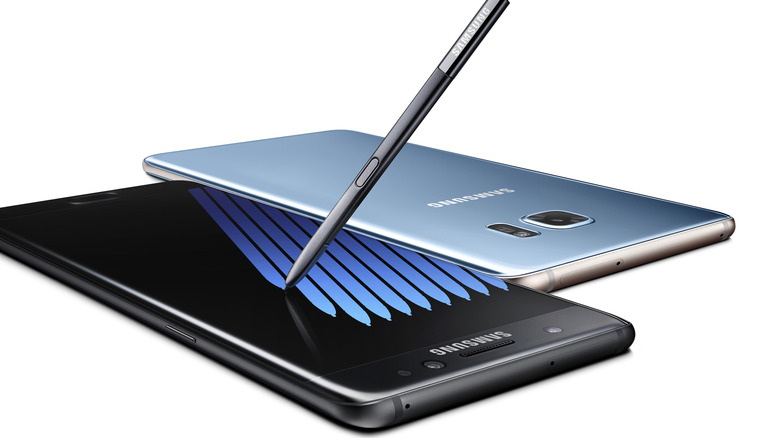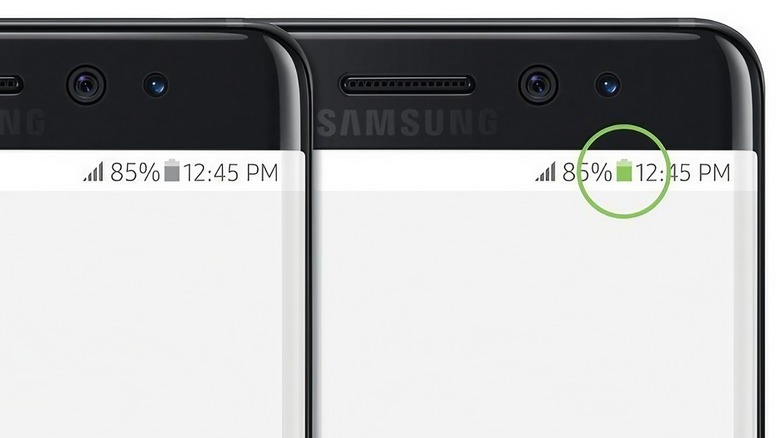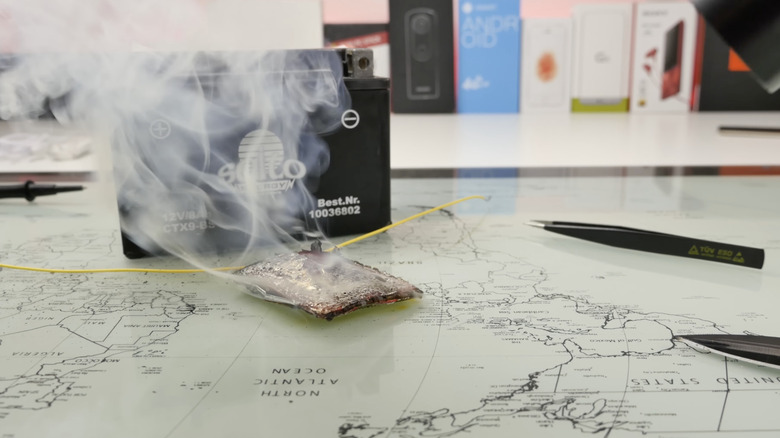This Is The Worst Smartphone Recall In History (And It's Not Even Close)
No other smartphone, before or since, has self-destructed — literally and figuratively — on the same scale as the Samsung Galaxy Note 7. Officially released on Aug. 19, 2016, the Note 7 was a sleek Android with a dual-curved 5.7-inch display (massive for the time), a precision stylus, an iris scanner, restored expandable storage capabilities, and all the bells and whistles Samsung fans adored. Reviewers gave it glowing scores, too, praising its design and software.
But within weeks, things took a sharp turn. Reports started to pour in about devices overheating, igniting, and in some cases, catching fire mid-charge. In one instance, a Florida man's SUV caught fire after his Note 7 burst into flames while charging. One man sued the company for burns he sustained after a Note 7 exploded in his pocket. Airlines also began issuing warnings, asking passengers to switch off the devices during flights — and eventually even banned the Galaxy Note 7 on flights due to fire risk. It quickly became evident that this wasn't just a public relations issue, but was really a full-blown tech emergency.
The recall was swift but the fire wouldn't go out
Within a few weeks of launch, Samsung announced a voluntary recall of 2.5 million Note 7s across 10 countries, including a million in the U.S. — one of the most embarrassing tech recalls of all time, and one of Samsung's biggest recalls. A replacement program followed, complete with software updates to identify safe units using a green battery icon. Even Samsung's then-mobile division president, DJ Koh, publicly urged customers to turn off their phones and exchange them immediately.
Samsung's shares nosedived nearly 7%, erasing around $14.3 billion from its market value in a matter of days. Subsequently, about 60% of affected devices in the U.S. and Korea were returned, with 90% of users (surprisingly) opting for another Note 7 instead of switching brands. For a brief moment, it looked like damage control might actually work.
But then the replacements started going up in smoke, too. Perhaps the most notable incident happened aboard a Southwest Airlines flight, which had to be evacuated due to a replacement Note 7. Multiple customers reported that their phones were heating up dangerously. Mobile carriers like AT&T, Verizon, and T-Mobile stopped exchanges and sales altogether.
On Oct. 11, Samsung finally pulled the plug. Production of the Note 7 was permanently halted, with the company citing consumer safety as the priority. The Note 8 even saw the battery shrink to 3,300mAh, versus its predecessor's 3,500mAh.
Recalls are rare, but the Note 7 set the bar
Eventually, Samsung revealed that a bad battery design and a hurried release were to blame for the debacle. Today, the recall remains the gold standard for smartphone disasters, not because recalls are rare, but because none has been this costly or dramatic. But it's worth noting that Samsung isn't alone in this hall of shame.
Apple had its own hiccup with the iPhone 6 when it issued a battery replacement program in 2015–2016 after users reported random shutdowns. Google's Pixel 2 XL didn't technically get recalled, but screen burn-in issues led to waves of replacements. LG's G4 was notorious for boot loops that bricked the phone.
Still, these were minor and limited to certain models or regions. Meanwhile, the recalls alone of the Note 7 debacle cost Samsung an estimated $5.3 billion in losses, including the cost of the recall itself and lost sales.


